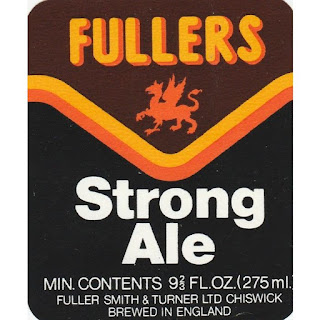The ranges of the two breweries are generally pretty similar. The biggest difference being that Fullers brewed three Pale Ales, compared with just two at Youngs. And, while both brewers produced two Mild Ales, they weren’t in the same classes.
Milds came in three classes, based around the price per pint. 4d was around 1028º, 5d around 1035º and 6d around 1043º. Fullers brewed the 5d and 6d types, while Youngs brewed 4d and 5d.
There something similar with the Bitters, where the strongest at Young, PA, was a 7d per pint beer, while Fullers PA was an 8d beer. Also Fullers Porter seems to be in a 1d per pint more expensive class than Youngs version.
The Stouts and Strong Ales correspond pretty much exactly, in terms of strength.
Some things the breweries shared. Like parti-gyling. Pretty much everything was parti-gyled at both. And both parti-gyled the Strong Ales with the Mild Ales. Which wasn’t the case at all London brewers. Barclay Perkins and Whitbread had separate grists for their Strong Ales.
The rates of attenuation are generally similar. Mostly 70%-ish. No huge differences are discernible in the hopping rates, either. The Strong Ales were a bit more heavily hopped at Youngs. But that’s about it for differences.
| Young's beers in 1932 | |||||||
| Beer | Style | OG | FG | ABV | App. Atten-uation | lbs hops/ qtr | hops lb/brl |
| A | Mild | 1027.7 | 1005.0 | 3.00 | 81.95% | 7.81 | 0.91 |
| X | Mild | 1035.5 | 1006.1 | 3.89 | 82.82% | 6.90 | 1.00 |
| XXX | Strong Ale | 1056.0 | 1016.6 | 5.21 | 70.36% | 8.22 | 1.91 |
| XXXX | Strong Ale | 1078.7 | 1029.4 | 6.52 | 62.64% | 8.22 | 2.68 |
| PAB | Pale Ale | 1035.7 | 1007.8 | 3.69 | 78.15% | 9.80 | 2.14 |
| PA | Pale Ale | 1045.7 | 1011.6 | 4.51 | 74.62% | 9.80 | 2.74 |
| P | Porter | 1034.1 | 1009.1 | 3.31 | 73.31% | 7.00 | 1.02 |
| S | Stout | 1052.1 | 1014.4 | 4.99 | 72.36% | 7.00 | 1.55 |
| Source: | |||||||
| Young's brewing record held at Battersea Library, document number YO/RE/1/1. | |||||||
| Fuller's beers in 1931 | |||||||
| Beer | Style | OG | FG | ABV | App. Atten-uation | lbs hops/ qtr | hops lb/brl |
| X | Mild | 1033.7 | 1007.8 | 3.43 | 76.99% | 7.10 | 0.98 |
| XX | Mild | 1043.3 | 1010.2 | 4.37 | 76.33% | 7.10 | 1.26 |
| AK | Pale Ale | 1032.3 | 1006.1 | 3.46 | 81.12% | 9.85 | 1.27 |
| XK | Pale Ale | 1040.4 | 1009.4 | 4.10 | 76.68% | 9.85 | 1.58 |
| PA | Pale Ale | 1052.3 | 1011.6 | 5.38 | 77.74% | 9.85 | 2.05 |
| P | Porter | 1041.4 | 1013.9 | 3.64 | 66.51% | 7.96 | 1.50 |
| BS | Stout | 1056.4 | 1020.5 | 4.75 | 63.65% | 7.96 | 2.05 |
| BO | Strong Ale | 1058.4 | 1015.5 | 5.68 | 73.45% | 7.26 | 1.74 |
| OBE | Strong Ale | 1072.0 | 1019.7 | 6.93 | 72.69% | 7.26 | 2.14 |
| Source: | |||||||
| Fullers brewing record held at the brewery. | |||||||












































































1 comment:
It's interesting to see the attenuation for Fullers. Whhen I tried homebrewing with it I had a similar experience to a lot of others where fermentation stalled out and it couldn't be roused. Other English yeasts were a lot more cooperative, but not Fullers.
Obviously the pros had figured out something which had escaped a lot of rank amateurs like me.
Post a Comment